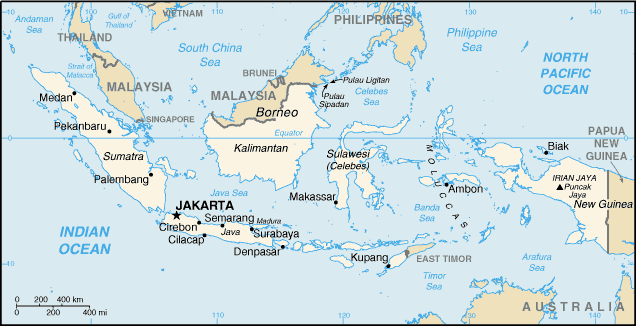Across Indonesia-
Across Asia
Area
comparative: almost three times the size of Texas; spread
over the same distance as from California to Maine
(over 3,200 miles) - approximately 17,700 islands.
|
| .......................................................................... |
.. |
...........................
...Across Asia......................................... .................
|
| ........ |
..............................Building Bridges ACROSS the Barriers.................................... .............................................................................. |
........ |



